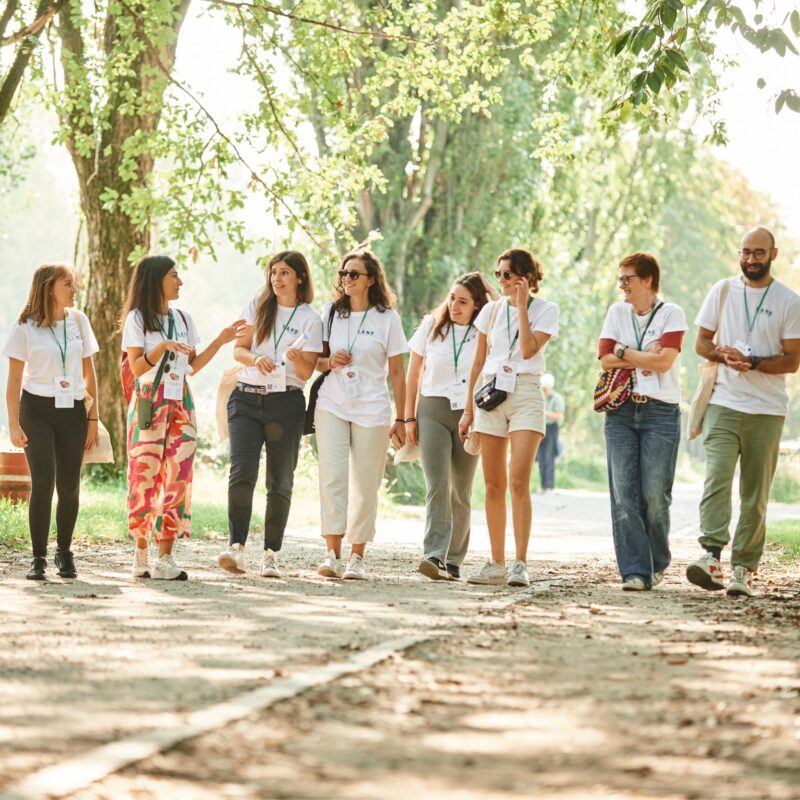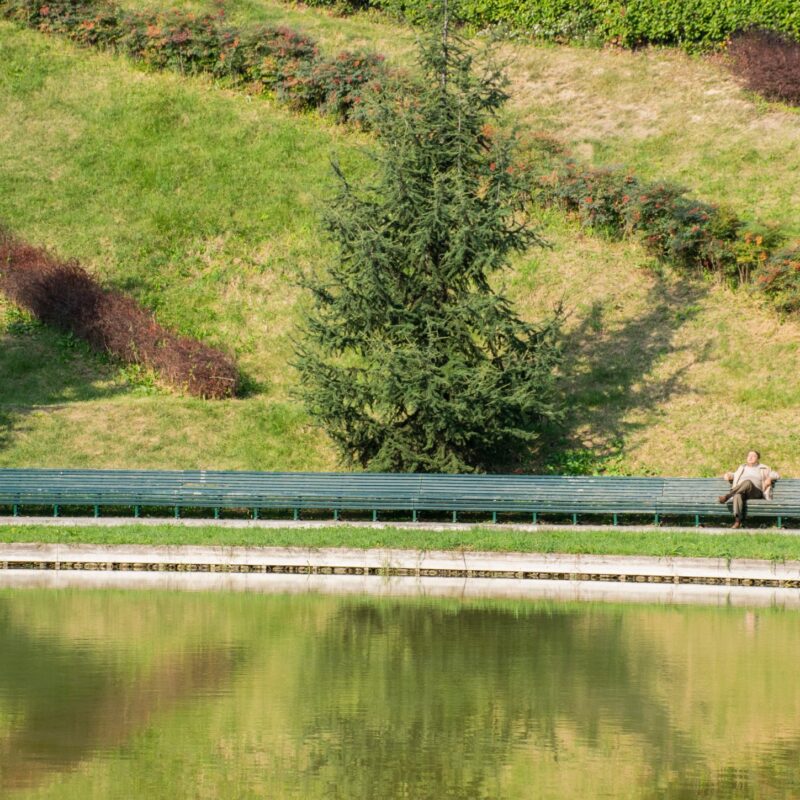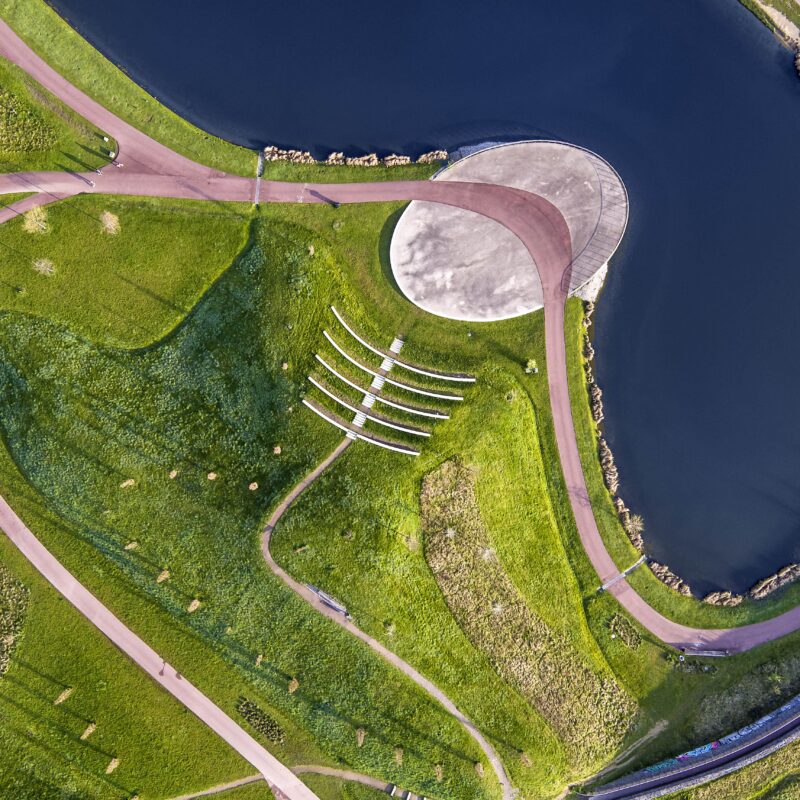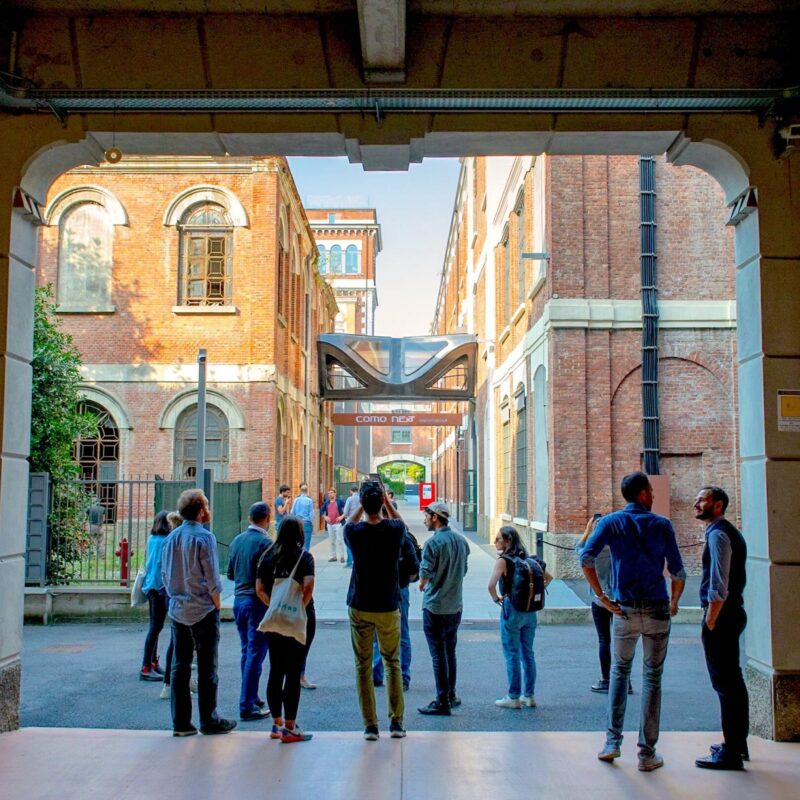
Newsletter #6: Bridging Landscapes - From Europe to North America
A look into the fascinating differences and converging visions of landscape and nature between Europe and North America. As global challenges compel us to view distant lands as neighbours, understanding these perspectives becomes crucial for a unified, nature-positive future.
Canada’s Unique Position
Having an office in Canada since September 2023 helps us better understand the Canadian context we explore in our daily work with the General Manager of LAND Canada, Valeria Pagliaro, and her team. The vastness of Canada, the second largest country in the world by area, presents a striking contrast to the relatively compact nations of Europe. Europeans often find themselves overwhelmed by Canada’s seemingly endless landscapes—a stark reminder of the dramatic differences in scale and space. While Europe’s population is densely packed into smaller land areas, Canada’s expansive territories are home to just 40 million people, roughly a tenth of Europe’s population. This immense space influences perceptions of distance and wilderness and magnifies nature’s productivity within these large, open areas.
With its abundant natural resources and vast landscapes, Canada’s environmental impact and responsibilities are disproportionately large compared to its smaller population. The country’s low population density and significant natural wealth place a unique responsibility on Canadians. They hold a crucial role in the stewardship of their environmental riches, with actions that can have far-reaching impacts on global ecological health and sustainability. This unique position underscores the importance of responsible environmental management and conservation efforts we are now part of, which are vital for Canada and the worldwide community.
Valeria Pagliaro lives in Canada since years and is at the forefront through strategic networking and community engagement. Her participation in influential events like the workshop at Pratt Institute and the Sommet Climat Montréal where Montreal Mayor Valérie Plante confirmed her commitment to work on the sponge city for a climate resilient city, highlights our desire to fostering discussions around sustainable development. Highly enriching was the dialogue with Daniel Roehr, professor at The University of British Columbia whose current research is focusing on creating “open access” climate resilience tools for landscape architects. Spanning from stormwater calculation to landslide mitigation, his team has developed cutting-edge insights which will further enhance our expertise.
Of all these experiences, Valeria will surely treasure them in view of the upcoming “Innovate4Cities” conference in Montréal, an event bound to sharing and generating local knowledge, research, and innovation opportunities which equips cities and local governments with spaces, networks, partnerships, and tools to accelerate climate ambition and implementation.

Daniel Roehr, his assistant Robert Ferguson, and Heather Braiden (Professeure adjointe a la Faculté de l’aménagement – École d’urbanisme et d’architecture de paysage Université de Montreal) with Valeria Pagliaro
Nature-positive Landscapes: Promenade Fleuve in Montréal
Cultivating the communities and learning from the contest are part of our DNA, so we are aware of the urgent need to recalibrate our approach to urban development by starting at the neighbourhood level and implementing targeted nature-based solutions that address local ecological and social needs and contribute to building climate-resilient societies.
Unlike Europe, with its continuous and stratified history, North America has had significant points of discontinuity. On the one hand, the colonial past and now the need to recover the presence, participation and invaluable land and sea stewardship knowledge of the Indigenous peoples, which is increasingly integrated into national policies and practices concerning land management and environmental conservation. On the other hand, the car-centric approaches and monofunctional land use zoning decisively condition the physical development of urban areas, making space for the transition from grey to green infrastructures and from extractive to productive landscapes.
A great example, in this sense, is our collaborative project to redevelop the Saint-Laurent River waterfront in Québec: “Promenade Fleuve”. This project was a joint effort with Vlan paysages, Atelier Pierre Thibault, Arup with White Arkitekter, Systematica and Jean-Bruno Morissette. It has been awarded the following Mention by the jury of the competition launched by the government of Québec: “Proposal which offers a rich look at the landscape and green corridors on a regional scale. It offers an interconnection which promotes a landscape sequence along the coastline”.
From the Po Valley in Italy to the Saint-Laurent lowlands, we hold water bodies and river shore renaturation very dear. This majestic river, the Saint-Laurent, is orienting the morphology and identity of the whole region. Our Promenade Fleuve project focuses precisely on the theme of water.. We planned to break existing obstacles between the river and its hinterland, such as outdated car infrastructures, to allow free access to the rivershore and water again. Thus, we wanted to recover not only its multiple habitats but also the “héritage du savoir-faire traditionnel quebecois” including food production, fishing, water filtration. We proposed a landscape sequence that would divert a stretch of highway to return space to the river and allow it to ‘breathe’, accommodating fluctuations in water levels, restoring the original link of Québec City with the banks and enhancing its resilience and climate change adaptation.
This important recognition encourages us to develop these precious insights and further carry on our commitment to #reconnectingpeoplewithnature, through the rediscovery of places’ identity and the promotion of biodiversity and sustainability for the collective well-being.

Promenade Fleuve for the Saint-Laurent River waterfront in Québec
What’s next? „Design the blanket, not the picnic“
Understanding the difference in scale and space helps us appreciate the need for tailored approaches to landscape architecture and urban planning that respect different regions’ cultural contexts and environmental imperatives. As we look to foster a nature-positive future, our strategies must reflect the specific needs and histories of the territories we serve.
We learned that the dialogue on public space still needs to be more inclusive, particularly in recognizing non-human stakeholders like nature and animals. Despite the advancements in biodiversity mapping initiatives such as those pursued by LAND‘s Research Lab (LRL) with the T-Factor Project, these vital elements of our ecosystem are yet to become central to the narrative of public space transformation.
In this perspective, my joint publication with Valeria Pagliaro, in which we contributed to Nadia Amoroso’s latest book, “Representing Landscape: visualizing climate action”, fits in. Our concept of “Landscape of Relations” aims to also foster in Canada the need to address connections and interpret landscape development as a regenerative force, capable of managing the effects of current emergencies through climate mitigation and adaptation measures. Exploring connections and interdependences between city and countryside, Nature-positive landscape emphasizes our idea of “landscape of relations” as the cornerstone of all transformative processes that directly involve communities in urban regeneration with the aim of improving citizens’ quality of life. A holistic system that promotes the reappropriation of places and highlights local resources and the peculiarities of ecosystems.

Corridor de Biodiversité Montréal by LAND
“Design the blanket, not the picnic,” this metaphor refers to our tasks: we help to create places (blanket) while it will then be the communities – human or non-human – who will inhabit the spaces and take possession of them (the picnic). The synthesis and the great lesson here is to listen to the great, powerful nature of North America by recovering the equal and interconnected humanity-nature bond that underlies Indigenous cultures and to seize the opportunity of the global socio-environmental crisis to make the transition from a fundamentally extractive culture to a -physical and cultural- productive landscape. We need to integrate biodiversity, climate resilience and social well-being in every action. It is about collective effort and individual responsibility because everyone plays a part in this global challenge.
What are your experiences working in North America?









